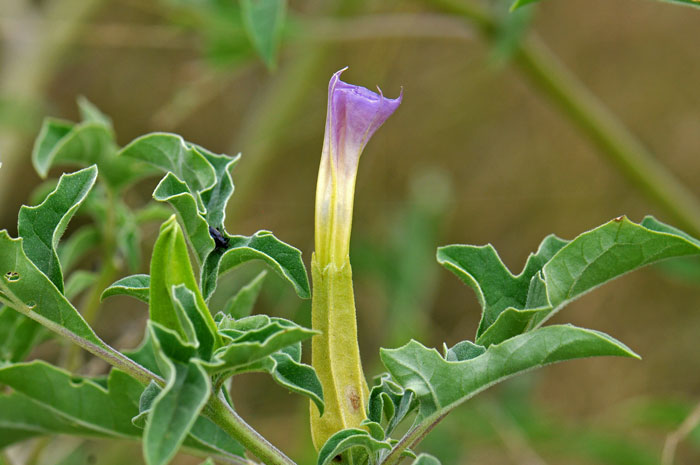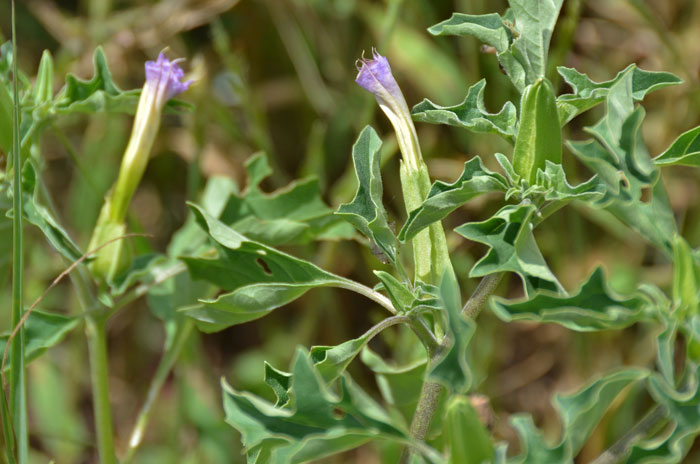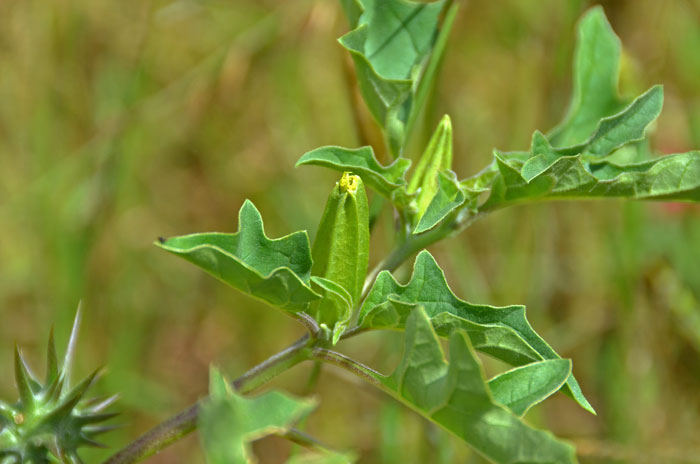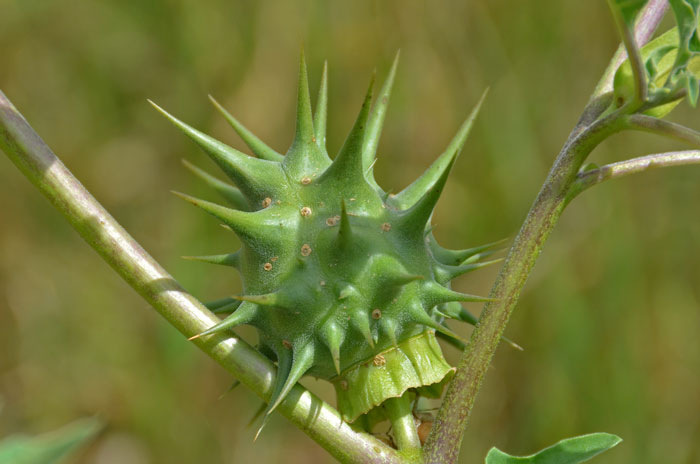Datura quercifolia, Chinese Thorn-Apple




Scientific Name: Datura quercifolia
Common Name: Chinese Thorn-apple
Also Called: Chinese Thornapple, Oak Leaved Angel's Trumpet, Oakleaf Datura, Oak-leaf Thorn Apple, Oak-leaf Thorn-apple (Spanish: Toloachè)
Family: Solanaceae, Nightshade or Potato Family
Synonyms: (Datura ferox, Datura villosa)
Status: Native
Duration: Annual
Size: Up to 3 feet more or less.
Growth Form: Forb/herb; mound shape.
Leaves: Green; often pinnately lobed
Flower Color: White or light blue, fading toward purple with age; corolla less than 2½ inches long, 5-toothed; fruit erect, spines relatively few and very unequal, larger spines more than ⅓ inch long, very stout.
Flowering Season: May to October.
Elevation: 4,000 to 6,000 feet.
Habitat Preferences: Roadsides, disturbed areas, dry hillsides, plains.
Recorded Range: In the United States Datura quercifolia is found mostly along the southern states and southern coastal states and also in California, Kansas, Maryland, Oklahoma and Pennsylvania.
North America & US County Distribution Map for Datura quercifolia.
U.S. Weed Information: In North America Datura quercifolia can be weedy or invasive according to the following authoritative sources: Weeds of the United States and Canada. Plants included here may become weedy or invasive.
Invasive/Noxious Weed Information: No information available.
Wetland Indicator: No information available.
Threatened/Endangered Information: No information available.
In the Southwestern United States, Arizona and California and New Mexico each have 5 species of Datura , Nevada and Utah each have 2 species and Texas has 4 species. All data is approximate and subject to taxonomic changes.
Comments: Datura quercifolia, or Oakleaf Datura, is so named because its leaves somewhat resemble that of an oak leaf. Arizona has 5 species of Datura; 3 native and 2 species from northern Mexico and South America.
In Southwestern Desert Flora also see Desert Thorn-Apple, Datura discolor and Western Jimson Weed, Datura wrightii.
Datura quercifolia has been used for food as a psychological aid by Western American indigenous peoples.
Keres, Western Drug, Psychological Aid, Roots eaten to see into the future.
See ethno-botanical uses at Native American Ethnobotany, University of Michigan, Dearborn.

